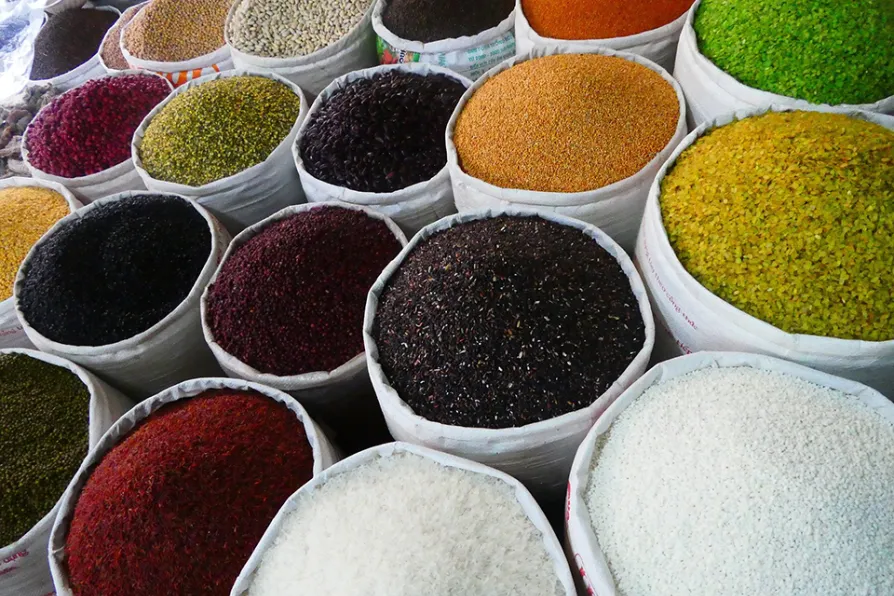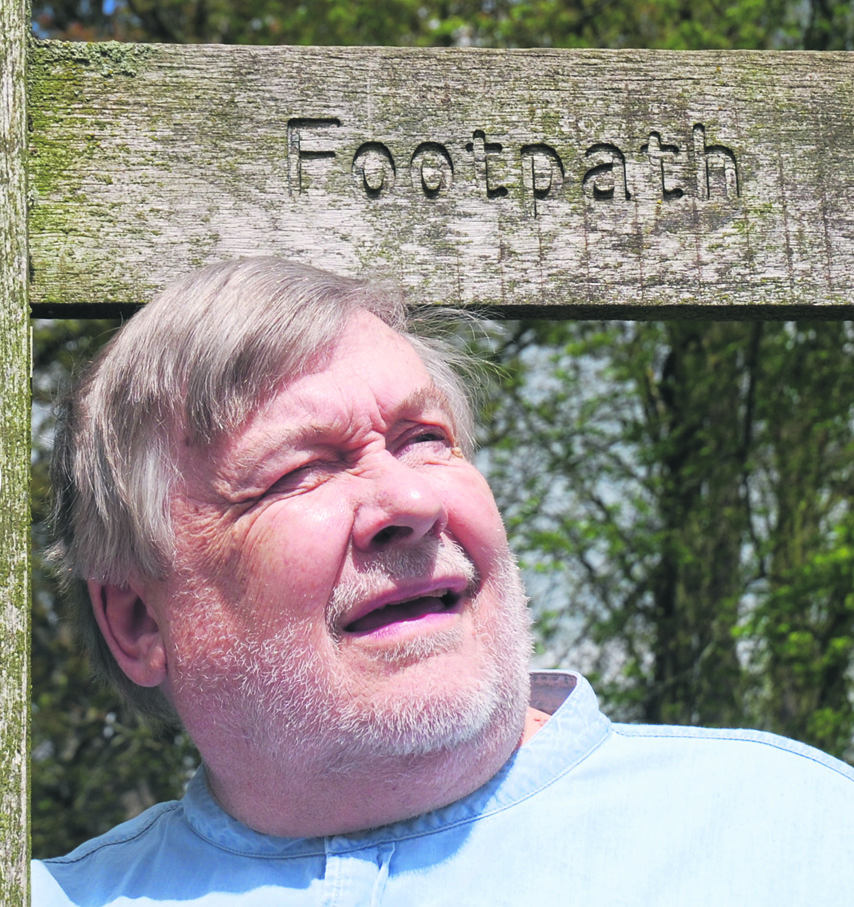VINCE MILLS cautions over the perils and pitfalls of ‘a new left party’


IT IS National Curry Week. The first was held 22 years ago. Just about the time then Labour foreign secretary Robin Cook made an excellent speech explaining why immigration made such a valuable contribution to Britain and its way of life.
After Cook had dealt with the serious economic and societal advantages of immigration, he went on: “It isn’t just our economy that has been enriched by the arrival of new communities. Our lifestyles and cultural horizons have also been broadened in the process.”
Then came a soundbite that would be much more widely published than his wise views on socialism, post-imperialism or why he opposed the Iraq war or Israel’s illegal settlements.
“Chicken tikka massala,” he said, “is now a true British national dish, not only because it is the most popular, but because it is a perfect illustration of the way Britain absorbs and adapts external influences.”
Polls at the time pronounced chicken tikka massala and rice the most popular meal in Britain.
Before we go any deeper into the British love affair with curry, I need to deal with an important geolinguistic point.
The hot spicy food we eat either in a restaurant or from a takeaway is not “an Indian”.
The recipe may have originated in the Indian subcontinent but it is far more likely to be cooked by someone from Bangladesh — a nation that fought long and hard for independence from India.
British curry restaurants are run by Bangladeshi or Pakistani people or by those who came from parts of Africa, Sri Lanka or Thailand, as well as many others including, of course, Indians.
As first-generation immigrants to Britain handed their curry businesses down to children, grandchildren and various other relatives and lines of decent got more tangled it became more difficult to identify food by the simple one-word geographical description “Indian”.
So you can see why I call it curry, but I can hear the purists firing up their computers to take me to task in our letters page on the origins of the word curry.
Nobody knows exactly how many curry restaurants there are in Britain. I’d guess around 10,000 including takeaways. They have a long and interesting history.
The wonderful Hanna Glasse in the first edition of her 1747 book of recipes, The Art of Cookery made Plain and Easy, included a spicy dish called “currey” and three recipes of Indian pilau.
Her later editions included recipes for fowl or rabbit curry and Indian pickles.
The most common attribution is that curry is an anglicised form of the Tamil word “kari,” meaning sauce or a rice relish using the leaves of the curry tree.
Some say it is actually the name of the cooking dish the spicy stew is cooked in.
The word kari is also used in many other southern Indian regions and nations. It refers to a meal of boiled vegetables or meat of any kind.
By the mid-17th century, the British East Indian Company was trading with Tamil merchants along the Coromandel coast of south-east India.
Before the British imperialists arrived, the Portuguese had been here combining Portuguese and Indian cusines.
The Portuguese wanted to take the spicy flavours home with them and persuaded the locals to mix up kari podi, or curry powder.
I have been working hard researching this article for 60 years — it’s an awful job but someone has to do it — every waiter or chef I have talked to seems to have their own theory on the origin of that “C-word.”
We do know that as early as 1733, curry was served in a coffee house in Haymarket, London.
By 1784, curry and rice had become specialities in some popular restaurants around London’s Piccadilly. Ex-soldiers back from India kept them busy.
The first purely Indian restaurant was the Hindoostanee Coffee House which opened in 1810 in Mayfair by Sake Dean Mahomed who had been a trainee surgeon with the East India Company.
Despite his claim to provide both authentic ambience and “the finest curries ever made in England” along with a separate hookah-smoking room, his restaurant went bankrupt.
Other curry houses succeeded and affluent returnees brought Indian servants back with them and ate curries at home.
Gradually a taste for curry spread. William Thackeray in his 1847 novel Vanity Fair has some fun feeding Becky Sharp too hot spicy food.
“Water, for Heaven’s sake, water!” cried Becky.
By the 1840s spice merchants were touting the health benefits of curry. According to them, it aided digestion while stimulating the stomach, thereby invigorating blood circulation resulting in a more vigorous mind. Still does, doesn’t it?
Curry also gained popularity as an excellent way of using up cold meats. Curried cold meats are the origin of jalfrezi, now a popular restaurant dish.
Between 1820 and 1840, demand for turmeric, a primary ingredient in making curry, saw imports increase three-fold.
However, the battle of 1857 for independence from British rule soured attitudes both in India and at home to all things Indian, including curry. It seemed unpatriotic.
Queen Victoria however couldn’t give up her curry. She was fascinated by all things Indian: food, architecture, furnishings, paintings and handsome young male Indian servants.
One such was a 24-year-old named Abdul Karim. She called him Munshi and they became very close. Young, fit Abdul impressed his Queen with many things, not least his chicken curry, dal and pilau, which she ate every week.
Nobody knows just how close the couple’s relationship went. The royal family destroyed any evidence of the existence of Abdul.
We do know she ended letters to him with a row of kisses — not normal from a Queen to a servant.
Victoria’s grandson George V always said he had little interest in any food except curry.
By the early 20th century, Britain had become home to around 70,000 south Asians. A handful of Indian restaurants sprang up in London.
By the 1940s and ’50s, most major Indian restaurants in London employed ex-seamen cooks from what is now Bangladesh, particularly from Syhlet. Many of these cooks aspired to open a restaurant of their own.
Post-war some bought bombed-out fish and chip shops and cafes and started selling curry and rice alongside fish, pies and chips and staying open to catch the pub closing-time trade. Curry after a night out in the pub soon became a tradition.
Gradually as British customers became increasingly fond of curry, the cafes discarded British dishes and turned into inexpensive curry restaurants and takeaways.
In the 1960s and ’70s many Bangladeshis came to Britain and a good few entered the curry business. Today probably eight out of every 10 curry restaurants in the UK are owned by Bangladeshis.[[{"fid":"25053","view_mode":"inlinefull","fields":{"format":"inlinefull","field_file_image_alt_text[und][0][value]":"London's Brick Lane, in the heart of Banglatown, is famous for its curries","field_file_image_title_text[und][0][value]":false},"link_text":null,"type":"media","field_deltas":{"1":{"format":"inlinefull","field_file_image_alt_text[und][0][value]":"London's Brick Lane, in the heart of Banglatown, is famous for its curries","field_file_image_title_text[und][0][value]":false}},"attributes":{"alt":"London's Brick Lane, in the heart of Banglatown, is famous for its curries","class":"media-element file-inlinefull","data-delta":"1"}}]]
Of course racist anti-immigration policies of Tory governments have made it more and more difficult to keep up a supply of skilled curry chefs.
Today different and more diverse regional curries have arrived in Britain. My choice is often a huge fluffy dosa, the southern Indian street snack of puffed rice pancake stuffed with potato and mustard-seed filling.
My wife Ann seeks out her own favourite, a Goan-influenced fried crispy soft-shelled crab.
Before the lockdown we both enjoyed Birmingham’s Balti Triangle, Wembley’s Ealing Road’s south Indian delicacies, Brick Lane or that Mecca of we curry aficionados — Bradford.
I’m sure you all have your own particular favourite dishes and places to eat them.
Strangely, on a couple of visits to India I never found any food that in any way resembles the curries we eat here in Britain.
Curry truly has become a constantly growing and developing part of our way of life. It is just one part of the rich harvest of benefits that immigrants bring to our country, and just one more reason why we must never let anti-immigration racists win any kind of argument.



















